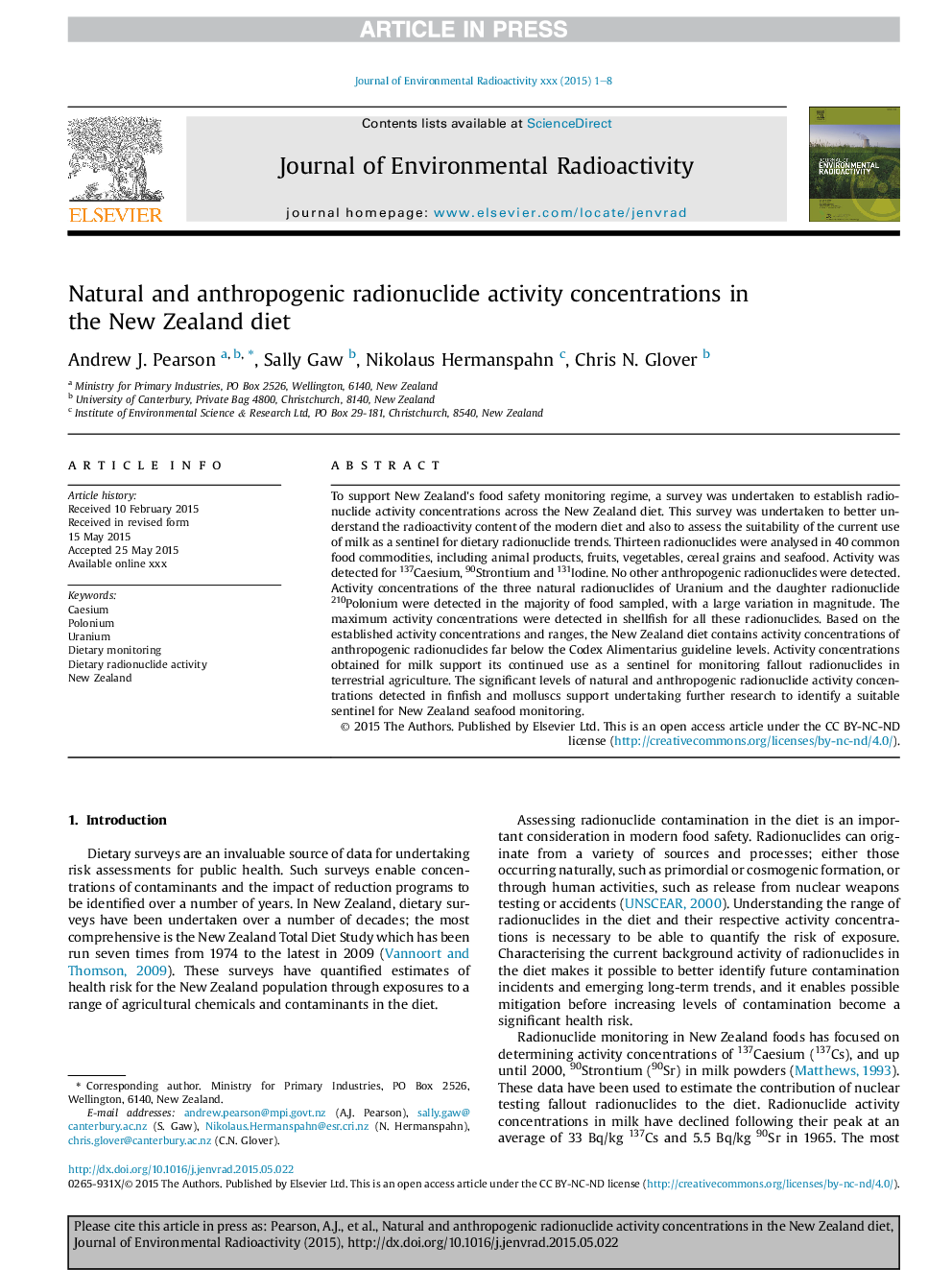| Article ID | Journal | Published Year | Pages | File Type |
|---|---|---|---|---|
| 10686554 | Journal of Environmental Radioactivity | 2016 | 8 Pages |
Abstract
To support New Zealand's food safety monitoring regime, a survey was undertaken to establish radionuclide activity concentrations across the New Zealand diet. This survey was undertaken to better understand the radioactivity content of the modern diet and also to assess the suitability of the current use of milk as a sentinel for dietary radionuclide trends. Thirteen radionuclides were analysed in 40 common food commodities, including animal products, fruits, vegetables, cereal grains and seafood. Activity was detected for 137Caesium, 90Strontium and 131Iodine. No other anthropogenic radionuclides were detected. Activity concentrations of the three natural radionuclides of Uranium and the daughter radionuclide 210Polonium were detected in the majority of food sampled, with a large variation in magnitude. The maximum activity concentrations were detected in shellfish for all these radionuclides. Based on the established activity concentrations and ranges, the New Zealand diet contains activity concentrations of anthropogenic radionuclides far below the Codex Alimentarius guideline levels. Activity concentrations obtained for milk support its continued use as a sentinel for monitoring fallout radionuclides in terrestrial agriculture. The significant levels of natural and anthropogenic radionuclide activity concentrations detected in finfish and molluscs support undertaking further research to identify a suitable sentinel for New Zealand seafood monitoring.
Keywords
Related Topics
Physical Sciences and Engineering
Energy
Nuclear Energy and Engineering
Authors
Andrew J. Pearson, Sally Gaw, Nikolaus Hermanspahn, Chris N. Glover,
